
GRANDMOTHERS SCHOLAR.
The Art of
KNITTING

DOVER PUBLICATIONS, INC.
MINEOLA, NEW YORK
Bibliographical Note
This Dover edition, first published in 2016, is an unabridged republication of the work originally published by The Butterick Publishing Co., London and New York, in 1892.
Library of Congress Cataloging-in-Publication Data
The art of knitting. Dover edition.
pages cm.
Reprint of: New York : The Butterick Publishing Co., 1892.
eISBN-13: 978-0-486-81059-1
1. Knitting. 2. KnittingPatterns.
TT820.A78 2016
746.432dc23
2015030864
Manufactured in the United States by RR Donnelley
80311201 2016
www.doverpublications.com
INTRODUCTION.

I N PRESENTING our patrons this book upon T HE A RT OF K NITTING , in response to their continuous demand for such a work, we take especial pride in announcing that it is the most complete of its kind, and the only one devoted wholly to the occupation or pastime of Knitting ever published. As it is intended for a companion-pamphlet to our publication upon T HE A RT OF C ROCHETING , it has been prepared upon the same basisthat is, the very first rudiments of the work are carefully described and illustrated, so that the amateur may acquire correctness and celerity in personally beginning and developing the art of Knitting, and with little difficulty soon keep pace with an expert in the work.
The secret of the success of any undertaking isfirst, complete mastery of details from the very first preliminaries; second, sufficient perseverance to grasp and conquer difficulties through a knowledge of detail, thus bringing harmonious results from puzzling or complicated conditions.
The same foundation of success is incorporated in the A RT OF K NITTING . We give you the first principles and many designs from the simple to the intricate, each accompanied by correct instructions whose signs and symbols are fully explained at the beginning of the collection. Given these, the persevering knitter can, with little difficulty, develop in a perfect manner every article described or suggested in T HE A RT OF K NITTING . But patience must be a virtue belonging to every knitter, whether it be a gift of nature or a matter of cultivation and discipline.
We have endeavored to present the best of everything in the way of designs, and have spared neither time nor expense, nor the virtue we recommend, in selecting and properly preparing the collection, and feel, therefore, a justifiable gratification in the resulta sentiment the purchasers of T HE A RT OF K NITTING cannot but experience, once they are in possession of the book and begin to follow its instructions.
THE BUTTERICK PUBLISHING CO. [Limited],
7, 9 AND 11 WEST 13TH STREET, NEW YORK.
CONTENTS.

The Act of Knitting.

ABBREVIATIONS USED IN KNITTING .
k.Knit plain.
p.Purl, or as is often called, seam.
pi.Plain knitting.
n.Narrow.
k 2 to.Knit 2 together. Same as n.
th o or o.Throw the thread over the needle.
Make one.Make a stitch thus: Throw the thread in front of the needle and knit the next stitch in the ordinary manner. (In the next row or round this throw-over, or put-over as it is frequently called, is used as a stitch.) Or, knit one and purl one out of a stitch.
To Knit Crossed.Insert needle in the back of the stitch and knit as usual.
sl.Slip a stitch from the left needle to the right needle without knitting it.
sl. and b.Slip and bind. Slip one stitch, knit the next; pass the slipped stitch over the knit stitch as in binding off work.
To Bind or Cast off.Either slip or knit the first stitch ; knit the next; pass the first or slipped stitch over the second, and repeat as far as directed.
Row.Knitting once across the work when but two needles are used.
Round.Knitting once around the work when four or more needles are used, as in a sock or stocking.
Repeat.This means to work designated rows, rounds or portions of work as many times as designated.
 * Stars or asterisks mean, as mentioned wherever they occur, that the details given between them are to be repeated as many times as directed before going on with those details which follow the next star. As an example: * K 2, p 1, th o, and repeat twice more from * (or last *) means that you are to knit as follows: k 2, p I, th o; k 2, p I, th o; k 2, p I, th o, thus repeating the k 2, p l, th o,twiceafter knitting It the first time, making Itthreetimes in all before proceeding with the next part of the direction.
* Stars or asterisks mean, as mentioned wherever they occur, that the details given between them are to be repeated as many times as directed before going on with those details which follow the next star. As an example: * K 2, p 1, th o, and repeat twice more from * (or last *) means that you are to knit as follows: k 2, p I, th o; k 2, p I, th o; k 2, p I, th o, thus repeating the k 2, p l, th o,twiceafter knitting It the first time, making Itthreetimes in all before proceeding with the next part of the direction.
GENERAL DIRECTIONS FOR KNITTING.
Most amateur knitters, and many experts, confess to an inability to follow the instructions and knitting designs published in various books and periodicals for their benefit. This is the result of a lack of perseverance on the part of the knitter, and is also often due to the different abbreviations used by different publishers of such work. A mastery of any set of abbreviations, will overcome the main difficulty; then, if the instructions are correct, the development of the design will be comparatively easy. We therefore urge those who purchase this manual, to become familiar with the abbreviations given above, before beginning any of the designs presented on the following pages; for much time has been spent to render them plain and correctly adapt them to the accompanying instructions.
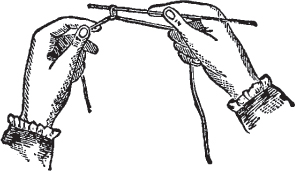
No. 1
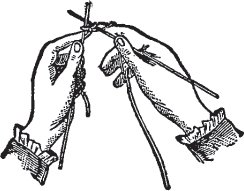
No. 2
C ASTING O N S TITCHES .
As every other task or pleasure has a beginning, so has knitting. The foundation, materials in hand, is, casting on stitches, for which we give several methods, as follows:
Of the two or three methods of casting on stitches, the one best adapted to garments or articles where an elastic edge is desired, is developed with a single thread or yarn and two needles. It is conducted as follows:
F IRST M ETHOD .
Make a loop in the yarn or thread and slip it onto a needle. (See , and slip it onto the left-hand needle. Repeat in this manner until you have as many stitches as required.

No. 3.
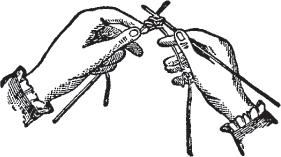
No. 4.
AND 4.D ETAILS FOR C ASTING ON S TITCHES WITH T WO N EEDLES .
S ECOND M ETHOD .
(W ITH O NE N EEDLE .)
Hold the end of the yarn under the third and fourth fingers of the left-hand. With the right (which also holds the needle) bring the yarn from under the left thumb up over it and also over the first finger of the left hand, then downward under the finger and up over the thumb; (see ), throw the yarn over the needle with the right hand (which holds the yarn as in regular knitting) draw a loop through, slip the yarn off the left first finger and draw it down to knot the loop or stitch on the needle. Then arrange the yarn over the left hand again and make another loop or stitch in the same way. Repeat until you have the required number of stitches on the needle.
Next page
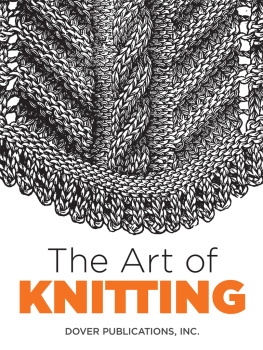

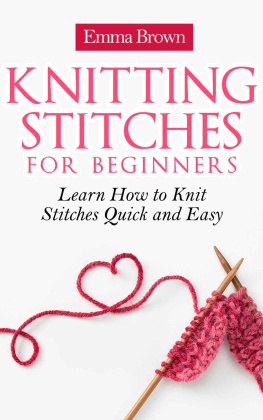

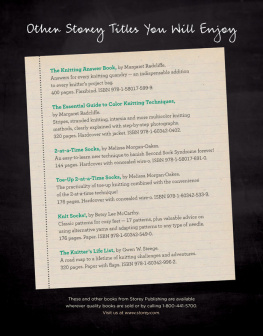

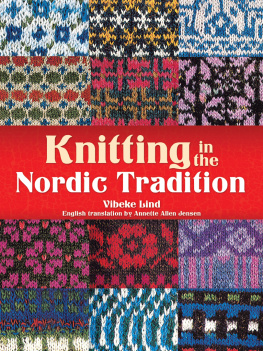
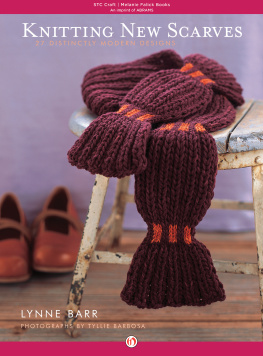
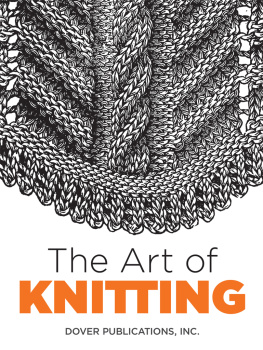






 * Stars or asterisks mean, as mentioned wherever they occur, that the details given between them are to be repeated as many times as directed before going on with those details which follow the next star. As an example: * K 2, p 1, th o, and repeat twice more from * (or last *) means that you are to knit as follows: k 2, p I, th o; k 2, p I, th o; k 2, p I, th o, thus repeating the k 2, p l, th o,twiceafter knitting It the first time, making Itthreetimes in all before proceeding with the next part of the direction.
* Stars or asterisks mean, as mentioned wherever they occur, that the details given between them are to be repeated as many times as directed before going on with those details which follow the next star. As an example: * K 2, p 1, th o, and repeat twice more from * (or last *) means that you are to knit as follows: k 2, p I, th o; k 2, p I, th o; k 2, p I, th o, thus repeating the k 2, p l, th o,twiceafter knitting It the first time, making Itthreetimes in all before proceeding with the next part of the direction.


